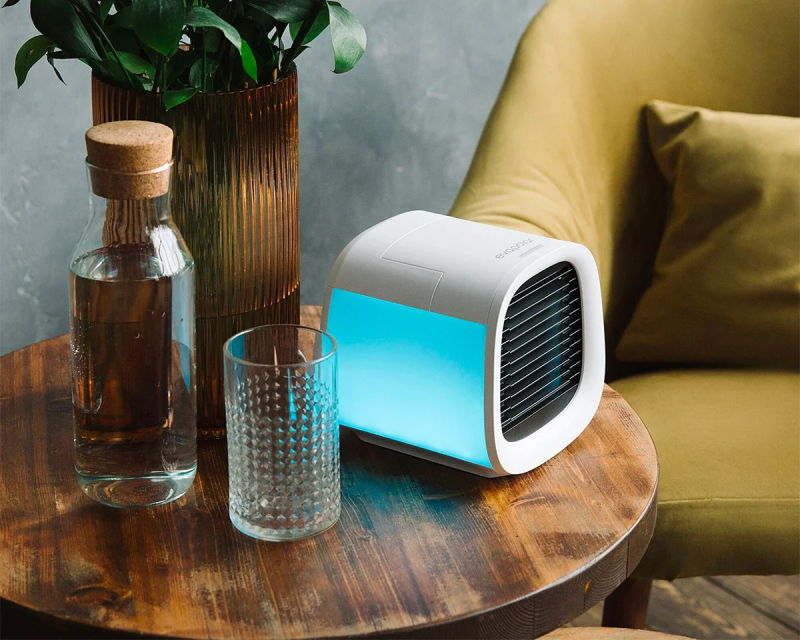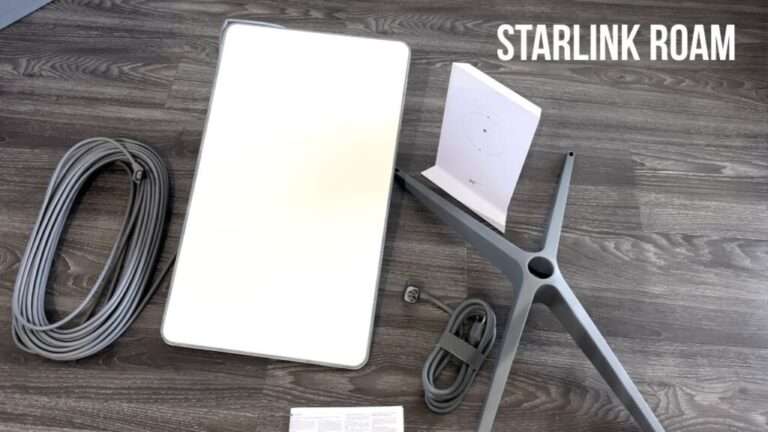As a digital nomad, maintaining a comfortable environment is crucial to staying productive, especially when you’re constantly on the move. Whether you’re working from a cozy VRBO in a tropical climate or living the van life, a portable air conditioner can be a game-changer. But choosing the right one isn’t just about cooling power—it’s about finding a unit that’s lightweight, efficient, and versatile enough to handle different environments.
This post will tell you the best portable air conditioners for digital nomads, explore the global perspective on air conditioning, and answer some essential questions you might have about using these devices.
Why Portable Air Conditioners Matter for Digital Nomads
For digital nomads, having control over your work environment can make a significant difference in your productivity and well-being. A portable air conditioner offers flexibility, allowing you to create a comfortable workspace no matter where you are. Unlike traditional air conditioning units that require permanent installation, portable ACs can be moved from one room to another, and even from one location to another, with relative ease.
These units are ideal for cooling small to medium-sized spaces, whether it’s a bedroom, an office, or even a camper van. They’re also a great solution for those times when your accommodation doesn’t offer air conditioning—a common scenario in many parts of the world.
Understanding Global Attitudes Toward Air Conditioning
Before getting into the specifics of the best portable air conditioners, it’s important to understand that air conditioning isn’t universally embraced. In the United States, air conditioning is often seen as a necessity. It’s a standard feature in homes, offices, and public spaces, with many people relying on it to get through the summer months.
However, this isn’t the case everywhere. In Europe, for example, air conditioning is less common, particularly in older buildings. Many Europeans prefer natural ventilation, relying on windows and fans to keep cool. During heatwaves, this can make for uncomfortable conditions, especially in countries like France and Turkey, where temperatures can soar in the summer.
In Asia, air conditioning is more widely used, particularly in hotter and more humid regions like Southeast Asia. However, energy efficiency is a major concern, and many air conditioning units are designed with this in mind. Japan, for instance, is known for its energy-efficient air conditioning systems that are designed to cool specific areas rather than entire buildings.
In contrast, countries like Australia have a mixed approach. In urban areas, air conditioning is common, especially in places like Sydney and Melbourne. But in rural and remote regions, where electricity costs can be high, people often rely on other methods like evaporative cooling or ceiling fans.
Understanding these differences can help you prepare for your travels and appreciate the role a portable air conditioner can play in keeping you comfortable, no matter where you are.
Top Portable Air Conditioners for Digital Nomads
Here’s a detailed look at some of the best portable air conditioners that can help you stay cool, comfortable, and productive while on the go.
Evapolar evaCHILL Personal Air Cooler
- Best For: Solo travelers and those working in small spaces.
- Why You’ll Love It: The Evapolar evaCHILL is an ultra-compact and lightweight device that uses evaporative cooling technology. It’s perfect for cooling down small areas, such as a workspace or bedroom, and also adds humidity to the air, which can be beneficial in dry climates. Its USB-powered design means you can easily connect it to your laptop or a power bank, making it an excellent choice for digital nomads who need a portable cooling solution that’s easy to carry around.
- Drawback: While it’s great for personal use, it won’t cool down larger rooms effectively. It’s more of a personal cooler than a traditional air conditioner.
Black+Decker BPACT08WT Portable Air Conditioner
- Best For: Those needing a more powerful cooling solution in medium-sized rooms.
- Why You’ll Love It: With 8,000 BTUs of cooling power, this unit can cool rooms up to 150 square feet, making it ideal for medium-sized spaces like studio apartments or large bedrooms. It features a dehumidifier mode, which is perfect for humid climates, and a fan mode for less intense cooling needs. The Black+Decker BPACT08WT also comes with a remote control, allowing you to adjust settings from across the room, and its wheels make it relatively easy to move around.
- Drawback: At around 53 pounds, it’s not the most portable option. It’s better suited for those who stay in one place for longer periods.
Midea MAP08R1CWT Portable Air Conditioner
- Best For: Versatile cooling and energy efficiency in medium to large rooms.
- Why You’ll Love It: The Midea MAP08R1CWT offers 8,000 BTUs of cooling power and is designed with energy efficiency in mind. It features a sleep mode that automatically adjusts the temperature to save energy while you sleep. The digital display and easy-to-use controls make it user-friendly, and it’s relatively quiet compared to other units, so it won’t disturb your work or relaxation.
- Drawback: It’s bulkier than some of the more compact options, but it’s still portable enough to move from room to room.
Zero Breeze Mark 2 Portable Air Conditioner
- Best For: Digital nomads on the go who need a true air conditioning solution.
- Why You’ll Love It: The Zero Breeze Mark 2 is a unique, battery-powered portable air conditioner that’s perfect for camping, van life, or any off-grid situation. It’s compact, lightweight, and can cool down a small space (up to 40 square feet) in just 10 minutes. This unit also features a dehumidifier and a fan, offering multiple ways to stay comfortable. The battery life is impressive, making it an excellent choice for remote work locations.
- Drawback: It’s on the pricier side, but for those who need portability and performance, it’s worth the investment.
Honeywell HL12CESWK Contempo Series
- Best For: Quiet, efficient cooling in larger spaces.
- Why You’ll Love It: The Honeywell Contempo Series is known for its quiet operation, which is ideal for work environments where you need to focus. It offers 12,000 BTUs of cooling power, making it suitable for larger spaces like living rooms or large offices. Its sleek design blends in well with modern interiors, and it also functions as a dehumidifier and fan, giving you flexibility in how you cool your space.
- Drawback: It’s heavier and larger than some other portable options, so it’s best suited for nomads who don’t move frequently.
Duux Blizzard Smart Mobile Air Conditioner
- Best For: Tech-savvy nomads who want smart control over their cooling.
- Why You’ll Love It: The Duux Blizzard is a high-tech portable air conditioner that’s perfect for those who love smart home devices. It’s Wi-Fi enabled, allowing you to control it remotely via a smartphone app. This unit provides 10,000 BTUs of cooling power and is designed to be energy-efficient with its inverter technology. It’s also relatively quiet, making it a good option for both work and sleep.
- Drawback: While it’s feature-rich, the smart functionality might be overkill for those who just want basic cooling.
LG LP0817WSR Portable Air Conditioner
- Best For: Reliable and efficient cooling in medium-sized spaces.
- Why You’ll Love It: The LG LP0817WSR is a solid choice for those who need a dependable air conditioner with 8,000 BTUs of cooling power. It’s easy to set up, and the LED display makes it simple to adjust settings. This unit also comes with a built-in dehumidifier, which is great for reducing humidity in the air, and it’s designed to cool rooms up to 150 square feet. It’s a reliable option that balances performance with ease of use.
- Drawback: It’s not as compact as some other models, so it might be a bit cumbersome if you’re frequently moving locations.
Can I Use a Portable AC in a Room with No Window?
One of the most common questions digital nomads ask is whether a portable air conditioner can be used in a room without a window. The answer is a bit nuanced. Most portable air conditioners require a way to vent the hot air they remove from the room. This is typically done through a window using an exhaust hose.
However, if you’re in a room with no window, you still have options. You can vent the hot air through other openings, such as a door leading to another room, a ceiling vent, or even a makeshift venting system. Some people opt for ventless air coolers, like evaporative coolers, which don’t require venting but are less effective in humid climates.
Does Portable AC Really Work?
Yes, portable air conditioners are effective at cooling small to medium-sized spaces, provided they’re used correctly. The key is choosing a unit that’s appropriately sized for the room you’re trying to cool. If you pick a unit with insufficient BTUs (cooling power), it will struggle to keep the space comfortable. Conversely, if you choose a unit with too much power, it might cool the room too quickly without properly dehumidifying, leading to a clammy feeling.
For digital nomads, a portable AC is a practical solution, especially when traveling in regions where air conditioning isn’t common or reliable. They work well for temporary setups and can be a lifesaver during hot spells.
Does Portable AC Bring in Fresh Air?
Portable air conditioners do not typically bring in fresh air from outside. Instead, they recirculate the air inside the room while removing heat and humidity. Some models, however, offer an option to bring in a small amount of outside air, which can be useful if you want to improve ventilation. If fresh air is a priority, you might consider combining a portable AC with a window fan or an air purifier that has a fresh air intake function.
Can Portable AC Run Continuously?
Many portable air conditioners are designed to run continuously, particularly models with a built-in thermostat. These units will cycle on and off to maintain a set temperature, which can be very energy-efficient. However, running a portable AC non-stop can lead to increased wear and tear, so it’s important to give the unit a break occasionally and ensure it’s well-maintained.
In hot and humid climates, continuous operation might be necessary, but be mindful of energy consumption and the potential for the unit to overheat. It’s also a good idea to use the AC in combination with other cooling methods, such as fans or dehumidifiers, to reduce the load on the unit.
What is the Quietest Portable AC?
Noise levels can be a major consideration, especially if you’re working or sleeping in the same room as your portable air conditioner. The quietest portable ACs typically have noise levels around 50-55 decibels, which is about the same as a quiet conversation or background music.
Among the models mentioned, the Honeywell HL12CESWK Contempo Series and the Duux Blizzard Smart Mobile Air Conditioner are known for their quiet operation. These units are designed with noise reduction in mind, making them ideal for digital nomads who need a peaceful environment for work or rest.
Does Portable Air Conditoners Cause Tinnitus?
Portable air conditioners are not known to directly cause tinnitus, which is the perception of noise or ringing in the ears. However, the noise generated by a portable AC could potentially exacerbate tinnitus symptoms in individuals who are sensitive to sound.
Some portable AC units can produce a noticeable level of white noise, which may be bothersome to those with tinnitus. The sound of the fan or the compressor running might not directly cause tinnitus, but it could make existing symptoms more noticeable or uncomfortable.
If you have tinnitus and are concerned about using a portable AC, you might consider selecting a quieter model or using earplugs to minimize exposure to any potentially bothersome noise. Read this post on does portable air conditioners cause tinnitus for more tips and information.
Tips for Using Portable Air Conditioners
Choose the Right Size: Selecting a portable air conditioner with the appropriate BTU rating for your space is crucial. A unit that’s too small won’t cool effectively, while one that’s too large may cool too quickly without removing enough humidity, leaving the room feeling clammy. Measure your space and match it with the unit’s specifications.
Maximize Efficiency: To get the most out of your portable AC, close windows and doors to prevent hot air from entering. Use curtains or blinds to block out direct sunlight, which can heat up your room quickly. Placing the unit in a shaded spot can also improve its efficiency.
Ventilation Matters: Ensure proper ventilation by securely attaching the exhaust hose to a window or other opening. If you’re in a room without a window, consider alternative venting options like a sliding door or an opening into another room.
Keep It Clean: Regularly clean the air filters to ensure your portable AC operates efficiently. Dust and debris can clog the filters, reducing airflow and cooling effectiveness. Many units have washable filters that are easy to clean.
Use a Fan in Conjunction: Pairing your portable AC with a fan can help distribute cool air more evenly throughout the room. This can reduce the strain on your AC unit and create a more comfortable environment.
Mind the Noise: If noise is a concern, place the unit on a soft surface like a rug to dampen vibrations. You can also position it further away from your work area or sleep space to minimize disruption.
Stay Energy-Conscious: Portable air conditioners can be energy-intensive, so consider using them in combination with other cooling methods like fans or natural ventilation. If possible, use energy-saving modes or timers to reduce power consumption, especially in regions with high electricity costs.
Prepare for Local Conditions: When traveling to different countries, be aware of local attitudes toward air conditioning. In some places, energy costs may be high, or AC may be less common. Be respectful of local practices and consider adjusting your usage accordingly.
Use Smart Features: If your unit has smart capabilities, take advantage of remote control options to manage your cooling more effectively. Set schedules or adjust temperatures even when you’re not in the room, optimizing comfort and efficiency.
Plan for Portability: If you’re frequently on the move, opt for a lighter, more compact model that’s easy to transport. Consider the weight and dimensions of the unit, and whether it can easily fit into your luggage or vehicle.
Pros and Cons of Using Portable Air Conditioners
Pros
Portable and Flexible: Portable air conditioners are easy to move from one location to another, making them ideal for digital nomads who frequently change their living or working spaces. You can set up your AC wherever you need it, whether it’s in a co-working space, a temporary apartment, or even a camper van.
Easy Installation: Unlike traditional air conditioners, portable units don’t require complex installation. Most come with a window kit for venting hot air, and they can be set up and running in minutes. This convenience is perfect for those who need a quick cooling solution without the hassle of permanent installation.
Versatile Cooling: Portable ACs are versatile and can function in different modes, such as air conditioning, dehumidifying, and fan-only mode. This versatility allows you to adjust your cooling needs based on the environment and weather conditions.
Personalized Comfort: As a digital nomad, you may find yourself in various climates and accommodation types. A portable AC allows you to maintain a comfortable temperature in your immediate environment, improving productivity and well-being, especially during hot weather.
Cost-Effective: Compared to installing a permanent air conditioning system, a portable AC is a more affordable option, especially for short-term stays. It can also save you money in regions where electricity is expensive by cooling only the space you’re using.
Cons
Limited Cooling Power: Portable air conditioners are generally less powerful than central or window units. They are best suited for small to medium-sized rooms, so they may struggle to cool larger spaces effectively, especially in extremely hot climates.
Ventilation Requirements: Most portable ACs require a window or another venting option to expel hot air. This can be a challenge if you’re in a room without windows or if the available window doesn’t accommodate the exhaust hose, limiting where you can use the unit.
Energy Consumption: While portable air conditioners are convenient, they can be energy-intensive, especially when running continuously. This can lead to higher electricity bills, which might be a concern for nomads staying in regions with expensive or limited power resources.
Noise Levels: Portable ACs can be noisy, especially when running at higher settings. This can be disruptive if you need a quiet environment for work or sleep, and might not be ideal for those sensitive to noise.
Bulkiness: Despite being portable, some units can be heavy to move, particularly models with higher BTU ratings. This can be inconvenient for digital nomads who travel frequently or have limited space for storage.
Maintenance Needs: Regular maintenance, such as cleaning or replacing filters and emptying condensate tanks, is necessary to keep the unit functioning efficiently. Neglecting maintenance can reduce cooling performance and lead to more frequent breakdowns.
FAQs About Portable Air Conditioners for Digital Nomads
What size portable air conditioner do I need?
The size of the portable air conditioner you need depends on the square footage of the room you’re cooling. For small rooms (up to 150 square feet), an 8,000 BTU unit is sufficient. For medium-sized rooms (150-300 square feet), look for a 10,000-12,000 BTU unit.
How do I vent a portable air conditioner if there’s no window?
If there’s no window, you can vent a portable air conditioner through other openings, such as a door, ceiling vent, or even a makeshift venting system using a hole in the wall or sliding door kit.
Are portable air conditioners energy-efficient?
Portable air conditioners can be energy-efficient if used correctly. Look for units with Energy Star ratings, and use features like sleep mode, timers, and thermostats to optimize energy consumption.
Can I use a portable air conditioner in a tent or camper van?
Yes, some portable air conditioners, like the Zero Breeze Mark 2, are designed for use in tents or camper vans. These units are compact, battery-powered, and ideal for small spaces.
How noisy are portable air conditioners?
Noise levels vary by model. Most portable air conditioners operate at 50-60 decibels, which is similar to the sound of a quiet conversation. Models like the Honeywell HL12CESWK Contempo Series are known for their quieter operation.
Do portable air conditioners also dehumidify the air?
Yes, most portable air conditioners have a dehumidifying mode, which helps remove excess moisture from the air. This is especially useful in humid climates where humidity can make the heat feel worse.
Can I leave a portable air conditioner running all day?
You can leave a portable air conditioner running all day, but it’s important to monitor it to avoid overheating or excessive energy consumption. Many units have built-in timers and thermostats to help manage continuous use.
What happens to the water produced by a portable air conditioner?
Portable air conditioners remove moisture from the air, which typically collects in an internal tank or is expelled through an exhaust hose. Some units require you to empty the tank, while others have continuous drain options.
Are portable air conditioners suitable for humid climates?
Yes, portable air conditioners work well in humid climates. They cool the air while simultaneously removing moisture. However, it’s essential to manage the condensate properly to prevent overflow.
Can I use a portable air conditioner in multiple rooms?
Yes, portable air conditioners can be moved from room to room as needed. However, you’ll need to set up the exhaust hose and venting system each time you change locations.
What maintenance does a portable air conditioner require?
Maintenance typically includes cleaning or replacing air filters, emptying the condensate tank, and ensuring the exhaust hose is free of obstructions. Regular maintenance helps keep the unit running efficiently.
Do portable air conditioners work in high temperatures?
Portable air conditioners are designed to work in high temperatures, but their effectiveness can diminish if the outside temperature exceeds 95°F (35°C). Ensure proper venting and use in shaded areas for best performance.
How do I store a portable air conditioner when not in use?
Before storing, clean the filters, drain any remaining water, and allow the unit to dry completely. Store it in a cool, dry place, and protect it with a cover to prevent dust buildup.
Can a portable air conditioner cool an entire apartment?
A single portable air conditioner can effectively cool one room or an open-plan area, but it’s unlikely to cool an entire apartment unless the space is small and well-insulated.
How long does it take for a portable air conditioner to cool a room?
It typically takes 20-30 minutes to notice a significant temperature drop in a room. The exact time depends on the room size, the AC’s BTU rating, and the initial room temperature.
Can I use a portable air conditioner in a room without windows?
Yes, but you’ll need to find an alternative method to vent the hot air, such as through a door, ceiling vent, or by creating a custom venting solution.
What is the difference between an evaporative cooler and a portable air conditioner?
An evaporative cooler uses water and a fan to cool the air and works best in dry climates. A portable air conditioner uses a refrigerant system to cool the air and is effective in both dry and humid environments.
Do portable air conditioners work in small spaces like bathrooms?
Portable air conditioners can work in small spaces like bathrooms, but they require proper venting. In some cases, a compact evaporative cooler might be a more practical solution.
Can portable air conditioners be used internationally?
Yes, but you’ll need to check the voltage requirements and potentially use a power adapter or converter, as electrical standards vary by country.
What are the alternatives to a portable air conditioner for digital nomads?
Alternatives include evaporative coolers, fans, and ceiling fans. In cooler climates, proper insulation and ventilation can also help maintain comfortable temperatures without the need for air conditioning.
Final Thoughts On Portable Air Conditioners For Digital Nomads
Investing in a portable air conditioner can significantly enhance your comfort and productivity as a digital nomad, especially when traveling in regions where air conditioning is not a given. The key is choosing a unit that fits your needs—whether that’s a compact, personal cooler like the Evapolar evaCHILL or a more powerful option like the Black+Decker BPACT08WT or the LG LP0817WSR.
Remember, while portable ACs can be incredibly useful, they’re not a one-size-fits-all solution. Consider the size of your space, the local climate, and your mobility needs when selecting the best unit for your travels. Keep in mind the global perspectives on air conditioning; in some places, it’s a rare luxury, while in others, it’s an essential part of daily life.
Staying cool is about more than just comfort—it’s about maintaining your well-being and productivity, no matter where your digital nomad journey takes you.
Safe Travels!






